<< Previous | Displaying results 6226-6250 of 6769 for "" | Next >>
The 42nd Infantry Division participated in major WWII campaigns and is recognized for liberating the Dachau concentration camp in 1945.
The 8th Armored Division participated in major WWII campaigns and is recognized for liberating the Halberstadt-Zwieberge subcamp of Buchenwald in 1945.
An aerial view of Amsterdam. The photograph was taken for German military use. Amsterdam, the Netherlands, 1939-1940.
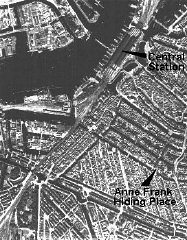
Arrival of Polish Jewish displaced persons in Vienna. They were sheltered at the Rothschild Hospital displaced persons camp. Vienna, Austria, 1946.
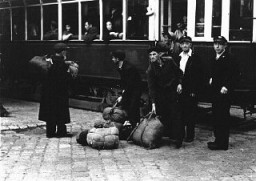
War crimes investigators interrogate chief nurse Irmgard Huber in connection with mass killings at the Hadamar Institute, one of main facilities in the Nazi Euthanasia Program. Hadamar, Germany, May 1945.
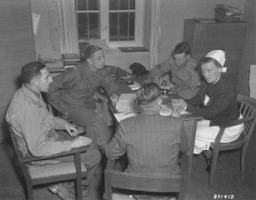
German police and SS personnel wait with a convoy of trucks during a shooting action in the Palmiry forest near Warsaw. These trucks were used to transport prisoners held in the Pawiak and Mokotow prisons. October–December 1939.
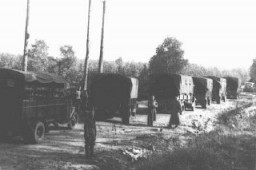
Polish hostages in the Old Market Square. Bydgoszcz, Poland, September 9–10, 1939. Just after the German invasion of Poland, armed groups of ethnic Germans in the city of Bydgoszcz staged an uprising against the local Polish garrison. This was put down by the next day, one day prior to the entrance of German troops in the city on September 5. A local command structure was quickly put into place by Major General Walter Braemer, and in response to continued attacks upon German personnel in the city,…
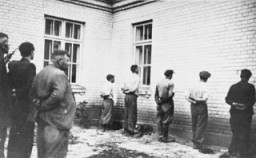
German soldiers execute Piotr Sosnowski, a priest from Tuchola. Piasnica Wielka, Poland, 1939.
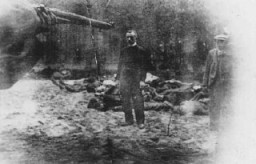
German soldiers hold Poles, including Polish clerics, hostage. Bydgoszcz, Poland, September 9, 1939.
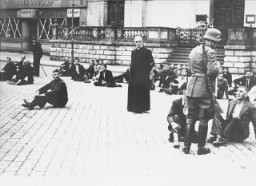
A page from SS officer Juergen Stroop's report on the Warsaw ghetto uprising. He wrote: "This is what the former Jewish residential quarter looks like after its destruction." Warsaw, Poland, April-May, 1943.
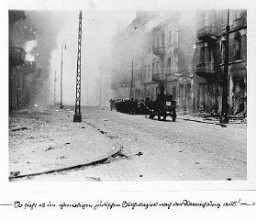
An underground bunker, built by Jews in Warsaw in preparation for anti-Nazi resistance. This photograph shows cooking facilities in a bunker. Jews hid in bunkers while the Germans systematically destroyed the ghetto during the uprising. Warsaw, Poland, April 19–May 16, 1943.
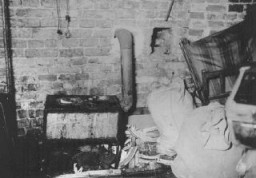
A mass marriage of 50 couples in Berlin. All of the couples belonged to the Nazi Party. Berlin, Germany, July 2, 1933.
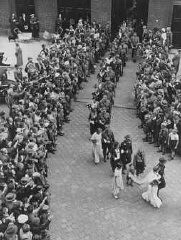
Young survivors of the Buchenwald concentration camp soon after liberation. Germany, April-June 1945.
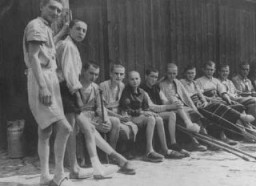
View of the courtroom during the trial of John Demjanjuk. Chief defense counsel Mark J. O'Connor addresses the court during the first session of the trial. Jerusalem, Israel, February 16, 1987.
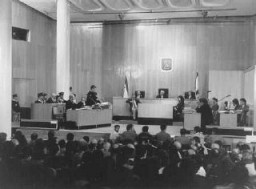
Fascist supporters during the "March on Rome," after which Fascist leader Benito Mussolini was appointed Italian Prime Minister. Italy, October 1922.
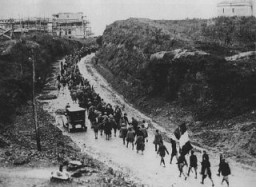
Chart used by the prosecution in the Doctors' Trial illustrates the organization of the Medical Services of the Wehrmacht (German armed forces). Nuremberg, Germany, December 9, 1946-August 20, 1947.
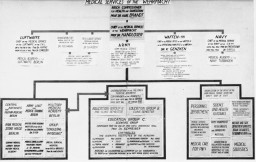
Nazi officials and Catholic bishops listen to a speech by Wilhelm Frick, Reich Minister of the Interior, at an official ceremony in the Saarbrucken city hall marking the reincorporation of the Saarland into the German Reich. March 1, 1935. Among those pictured is Joseph Goebbels (seated at the far right), Franz Rudolf Bornewasser (Bishop of Trier) and Ludwig Sebastian (Bishop of Speyer).
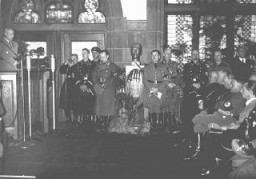
A German soldier stands on a toppled Polish monument. Krakow, Poland, 1940. This statue commemorated the Polish victory at Grunwald over the Teutonic knights in 1410. In accordance with the plans of German occupation authorities in Poland, all physical symbols of Polish national culture were to be obliterated to make way for the "Germanization" of the country.
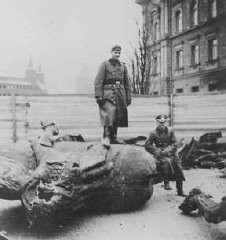
A group of children assembled for deportation to Chelmno. During the roundup known as the "Gehsperre" Aktion, the elderly, infirm, and children were rounded up for deportation. Lodz, Poland, September 5-12, 1942.

German police round up Jews and load them onto trucks in the Ciechanow ghetto. Ciechanow, Poland, 1941-1942.
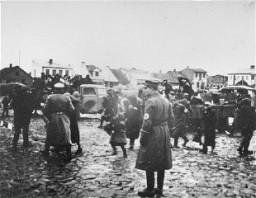
Containers of Zyklon B poison gas pellets found at the Majdanek camp after liberation. Poland, after July 22, 1944.
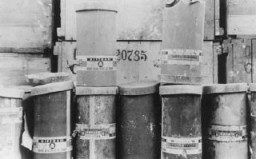
Sigmund Freud and daughter Anna in Paris, en route to exile in England. June 1938.
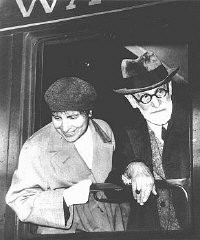
Two emaciated female Jewish survivors of a death march lie in an American military field hospital in Volary, Czechoslovakia. Pictured on the left is seventeen-year-old Nadzi Rypsztajn.The original caption reads "This girl, only seventeen years old, was forced to march 18 miles a day for 30 days on one bowl of soup a day. The 5th Infantry Division of the U.S. Third Army found 150 in the same condition when they entered Volary, Czechoslovakia."
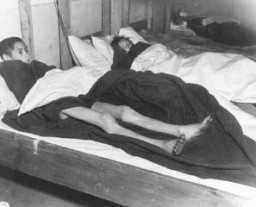
A Hungarian Jewish youth identifies the body of his father, who was shot by the SS during a death march from Flossenbürg. Members of the US military prepare the victims' burial. Neunburg, Germany, April 25, 1945.
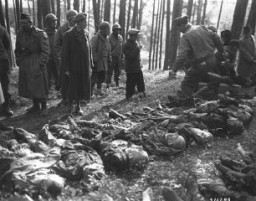
Sofia Karpuk holds a name card intended to help any of her surviving family members locate her at the Kloster Indersdorf displaced persons camp. This photograph was published in newspapers to facilitate reuniting the family. Kloster Indersdorf, Germany, October-November 1945.
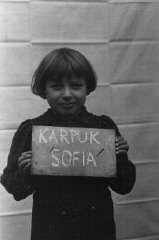
We would like to thank Crown Family Philanthropies, Abe and Ida Cooper Foundation, the Claims Conference, EVZ, and BMF for supporting the ongoing work to create content and resources for the Holocaust Encyclopedia. View the list of donor acknowledgement.